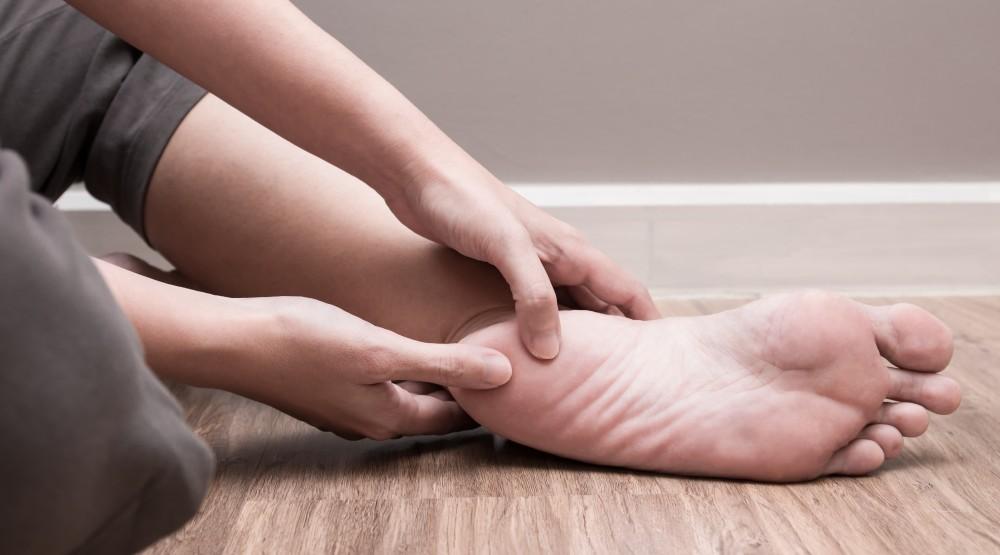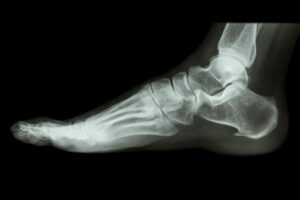Living with Plantar Fasciitis

Plantar fasciitis is one of the most frequently reported foot complaints. If you feel pain in your heel when you first stand up in the morning or after you’ve been sitting for some time, you may be experiencing plantar fasciitis.
What is plantar fasciitis?
There’s a thick band of tissue called the plantar fascia that runs from the base of your toes, across the bottom of your foot, to connect at your heel. This ligament works as a shock absorber with each step you take and provides support to the arch of your foot.
Under some circumstances, the plantar fascia can become worn and damaged. It may develop microtears. The damage to your plantar fascia leads to inflammation, and that, in turn, leads to the pain you feel.
What should you do?
First, if you’re experiencing consistent pain in your foot, you should see a specialist. Dr. Ryan Golub at Arizona Foot Health has the knowledge and experience to evaluate and treat your issue, whether it’s plantar fasciitis or something else.
Even with expert care, you should be prepared for the possibility of a relatively long recovery. This is because it takes time for your plantar fascia to heal, sometimes several months. However, if you follow Dr. Golub’s treatment approach carefully, your results will last.
A multi-pronged approach
Depending on the extent of the damage to your plantar fascia, there are several different treatment options. Some of the treatments provide relief day-to-day, and others are designed to help you stay better for the long term.
For example, most people with plantar fasciitis benefit from stretches and exercises. Dr. Golub shows you how to do specific movements that help your foot heal and ease your pain.
Since the pain is a result of inflammation, Dr. Golub may suggest you take an over-the-counter anti-inflammatory medication to help you manage the pain.
You may need to sleep with a special brace that stretches your foot, or Dr. Golub may recommend an orthotic insert for your shoe to provide support and relief.
Dr. Golub also offers amniotic growth factor injections to help your foot heal. This is a cutting-edge procedure that takes advantage of your body’s natural healing systems.
In the end, the best treatment or combination of treatments depends on numerous factors, including whether you have a history of plantar fasciitis, your occupation and other lifestyle elements, and your goals. Dr. Golub provides treatment tailored to meet your individual needs.
If you’d like to learn more about treatment options for plantar fasciitis, book an appointment at Arizona Foot Health. Our online scheduling tool is available any time day or night, or you’re welcome to call our office between 8 am and 4 pm, Monday through Friday.
You Might Also Enjoy...
The Achilles Heel
Given Arizona’s climate, patients are able to remain active year round. It’s why we all chose to live here. But…
Alleviating Back Pain and Other Benefits of Custom Orthotics You Didn’t Know About
Would you ever imagine that custom foot orthotics could improve your quality of life? That’s what many people say after…
9 Helpful Tips to Prepare Your Home Before Bunion Surgery
When moderate interventions, such as wearing wider shoes or using pads in your shoes, fail to ease your bunion pain…
When Should You Go to the Doctor for an Ingrown Toenail?
In most cases, you can nurse an ingrown toenail at home with over-the-counter pain medication, topical antibiotic creams, and soaking…
6 Home Exercises to Keep Your Ankles Strong
Ankles that feel wobbly and weak are vulnerable to injury. If you play sports, run, jump, or just walk often,…
Is Surgery My Best Option For Treating Bunions?
You have a bunion and it isn’t pretty, but if your bunion is small enough, or doesn’t hurt, you may…






